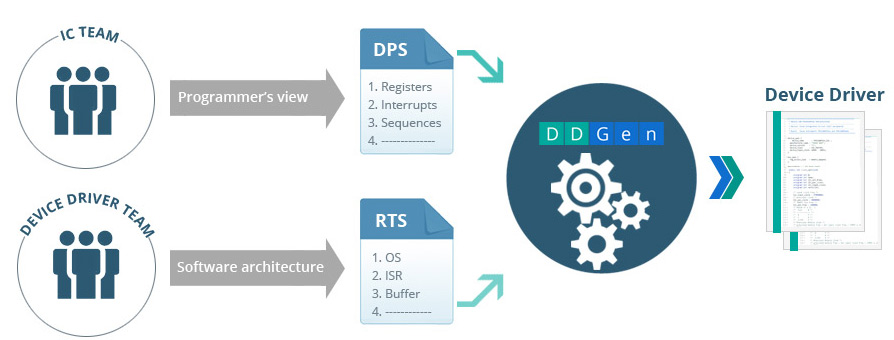DDGen (Device Driver Generator) is a software tool for anyone wanting to write software device drivers. Our target audiences are typically Embedded System Developers wanting to implement a software driver for a hardware platform or IC design engineers looking to develop software/firmware as part of post-silicon validation process. DDGen tool and methodology encourages device driver developers to think about the problem-domain rather than the implementation-domain. The tool provides a high level mechanism to specify:
The high level specifications DPS and RTS are used as input to the DDGen tool which then generates ANSI C compliant device driver code ready to be used by the applications.

Current version of DDGen tool supports: